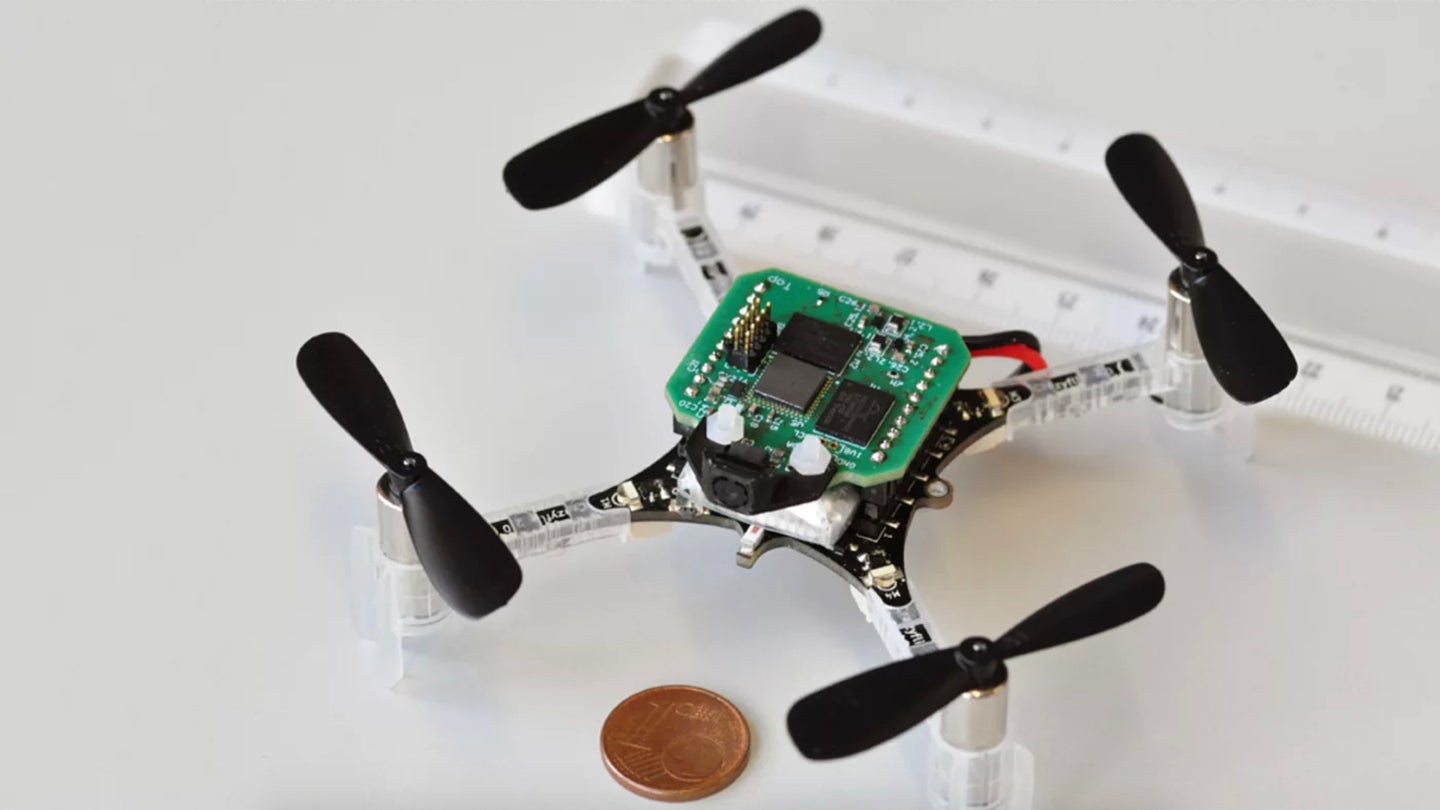World’s Smallest Autonomous Drone Takes Flight in Europe
Swiss and Italian researchers have managed to run an artificial intelligence network with the least amount of battery power.

Researchers from the University of Bologna and the Swiss Federal Institute of Technology in Zurich (otherwise known as the ETH Zurich) claim to have engineered the world’s smallest autonomous drone, according to a recent report.
When it comes to the nano-drone industry, the primary focus of which is to build capable autonomous UAVs with the smallest, most lightweight batteries, this is a milestone. With a smaller battery comes a decrease in power and flight time. The bigger the battery, the heavier and larger the drone. For nano-drones, which are defined by maximum four-inch diameters, developing a model somewhere in between these two poles has been a longtime struggle for engineers.
The two teams of European researchers may have finally achieved that task, however, by reducing the power requirements of the drone by using a newly-developed processor that can efficiently run the autonomous, artificial intelligence-infused navigation required, according to Fast Company.
“We did not test this extensively, but from first tests, we saw that we were running out of battery after approximately five minutes,” said researcher Antonio Loquercio. “It would be nice to achieve 30 minutes of autonomy. This would be more than enough to inspect, for example, medium-size warehouses and get back to the charging station.”
These two teams used a new mobile processor called GAP8, which is comprised of eight processing cores that are specifically designed to process artificial intelligence applications like image recognition, which is vital to an autonomous drone.
GAP8’s foundation is built on RISC-V, which is, in turn, based on RISC (reduced instruction set computer) technology from the 1980s. RISC -V essentially spares the GAP8 chip from demanding extensive processing power by multi-tasking its operations, according to Fast Company. In other words, the reason these teams were able to develop an autonomous drone that requires so little processing power, and hence, a smaller battery, is entirely due to the long lineage of predecessors in the field. The inventors of RISC, by the way, just won the Turing Award for their accomplishments.
You may recall DroNet, an artificial intelligence-infused drone network that allows drones to autonomously learn how to navigate in new surroundings. The two teams of researchers managed to use the GAP8 platform to run DroNet on this new lightweight system, thereby allowing a nano-drone of its minuscule size to successfully navigate autonomously. Of course, the teams first had to train their modified DroNet platform by capturing videos of real-world traffic scenarios, in order for the UAV to operate as intended.
“We still need to overcome many technical and algorithmic challenges before this will become a real product,” said Loquercio. “I believe that in the next five years we will start getting something working in controlled environments, [such] as industries or warehouses. To apply it ‘into the wild’ one should probably wait a bit more.”
Ultimately, what these researchers have accomplished is running highly-sophisticated artificial intelligence on a chip smaller than your pinky nail, while using the least amount of power required to do so on a drone. While the above technical jargon may be slightly too confusing to the layperson, it’s safe to say that the ramifications of this achievement will soon find their way into not only the world of drones, but security, the Internet of Things, environmental inspection, and in use cases we haven’t even envisioned yet.
